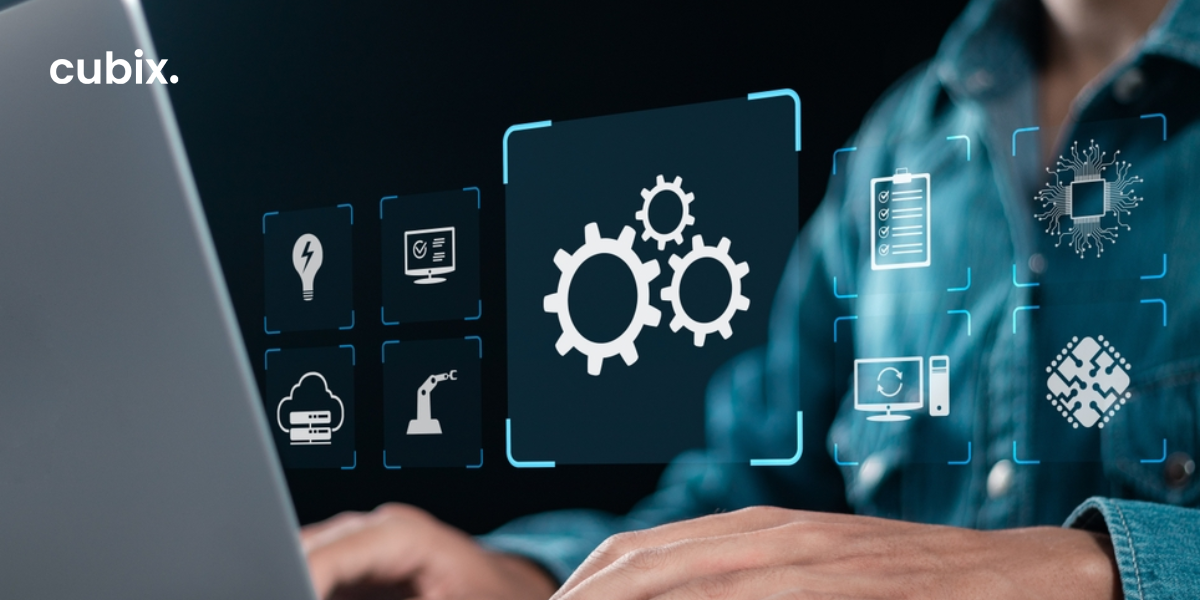In business, no two days are the same. What worked yesterday might not work today. Hence, enterprises looking to maintain their position at the top are required to be vigilant of what’s happening – they are required to upgrade their arsenal constantly as they have to be equipped to handle the challenges of the ever-evolving business landscape.
Modernizing legacy software is one way to stay ahead of the technological advancements. That’s one of the primary reasons why enterprises are opting to avail legacy software modernization services to upgrade their technologies in order to welcome business growth.
This blog sheds light on how modernization enables organizations to achieve efficiency and unlock unprecedented growth.
Problems with Outdated Software
Outmoded Technology
Legacy software typically relies on old-fashioned technology stacks, which can't easily adapt to contemporary tools and methodologies. This creates roadblocks for companies seeking to innovate and expand, as they are unable to harness the full potential of the latest software and hardware advancements. Consequently, these businesses may lose out on opportunities for streamlining operations and gaining a competitive edge.
Moreover, legacy systems are more susceptible to cyber threats due to their outdated security features – which are unable to counter modern cyber threats – and infrequent updates. They often lack the robust security measures found in modern software, rendering them attractive targets for cybercriminals. This vulnerability can result in data breaches, financial losses, and harm to a company's reputation.
Inefficient Operations
Legacy software frequently runs sluggishly and with less efficiency, causing bottlenecks in various processes. This inefficiency can lead to higher operational expenses, reduced productivity, and frustration among employees who must grapple with outdated systems. It can also negatively impact customer satisfaction if it results in slower response times.
Challenges in Maintenance
The upkeep of legacy systems becomes progressively more challenging as expertise in outdated technology becomes scarcer. Finding skilled professionals who understand outdated technology can be daunting, and retaining such expertise can be costly. This can result in increased maintenance expenses and larger downtimes when issues arise – which is often with legacy systems.
In certain cases, legacy hardware or software components may become obsolete and unavailable. This makes it difficult to find replacement parts, and the unavailability of crucial components can lead to extended downtime which slows down day-to-day operations.
Compliance Issues
Numerous industries are bound by stringent data management and security regulations to safeguard sensitive information. Legacy systems frequently lack the necessary features and updates to meet these evolving compliance standards. Non-compliance can entail legal consequences, fines, damage to the company's reputation, and ultimately impact the customer’s trust negatively.
Hence when opting to avail legacy software modernization services go for a company that prioritizes compliance.
Approaching the Process of Modernization
Identifying Issues with Existing Systems
The journey towards modernization kicks off with a comprehensive evaluation of the existing legacy systems. This evaluation helps identify pain points such as bottlenecks, inefficiencies, and security vulnerabilities, laying the groundwork for the modernization strategy.
Establishing Modernization Objectives
For a successful modernization endeavor, it is essential to set clear objectives. Define what you aim to accomplish, whether it involves enhancing efficiency, bolstering security, or aligning with industry regulations. These defined objectives will serve as a guiding light throughout the entire process.
Assessing Feasibility
Before committing to a modernization project, assess its feasibility, considering budget constraints, technology options, and potential disruptions to daily operations. A solid understanding of feasibility is pivotal to making informed decisions.
Steps Towards Effective Modernization
After figuring out the basics discussed in the previous section, it's time now to get into the specifics, which include:
Selecting the Right Technologies
Delve into the available technologies and frameworks that align with your modernization objectives. Take into account factors such as scalability, adaptability, security, and community support. Alignment with Goals: Verify that the chosen technology aligns with long-term business objectives. It should support scalability and flexibility for future growth.
Data Migration
Data Assessment: Evaluate the data that requires migration. Identify its format, structure, and dependencies. Decide on a data migration strategy, which might involve a phased transition or a complete data transfer.
Comprehensive Documentation: Document the entire data migration process, including source and target data models, transformation rules, and error-handling procedures.
Testing: Thoroughly test the data migration process to uncover and rectify any issues. Preventing data loss or corruption during this critical step is paramount.
Employee Training
Recognize the skill gaps within your workforce. Identify the areas where training is essential, taking into account the new technology and processes introduced during modernization. Invest in training programs that equip employees with the necessary skills to operate within the modernized system. This reduces resistance to change and facilitates a smooth transition.
Testing and Quality Assurance
Develop an all-encompassing testing plan that encompasses functional, performance, security, and integration testing of the modernized system. Enforce a rigorous quality assurance process to detect and resolve issues prior to the new system going live. Continuous testing and feedback loops are crucial to ensure the system's stability.
Implementation and Ongoing Support
Introduce the new system in stages to minimize disruptions to the organization. Incremental adoption allows for the identification and resolution of issues as they arise. Furnish continuous support for the new system, addressing any issues, implementing updates, and ensuring that the system remains aligned with the evolving needs of the organization. User feedback and monitoring are indispensable for long-term success.
Partner with Cubix for Legacy Software Modernization
To avail superior legacy software modernization services collaborate with Cubix – an enterprise app development company that is ahead of the latest trends in the realm of business and technology, and knows the ins and outs of legacy software modernization.
Cubix offers tailor-made solutions for modernizing legacy systems. Our experts provide customized strategies, access to cutting-edge technology, and comprehensive support, ensuring a seamless transition and optimizing the advantages of modernization, enabling businesses to maintain competitiveness in the digital era.
Contact us today to discuss your modernization plan.

